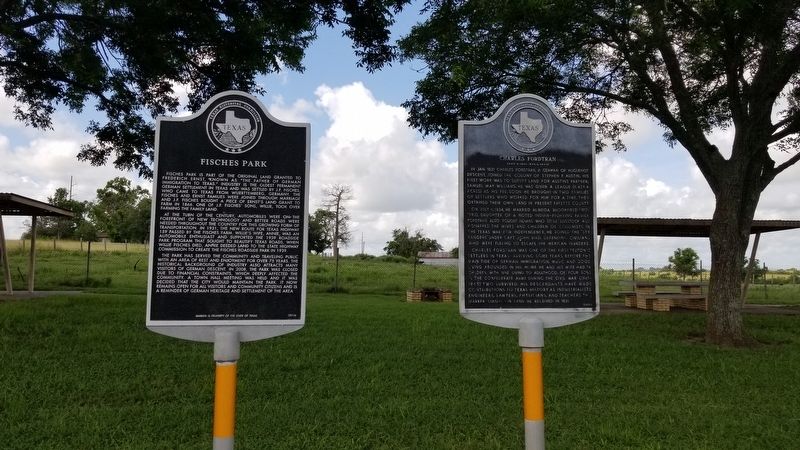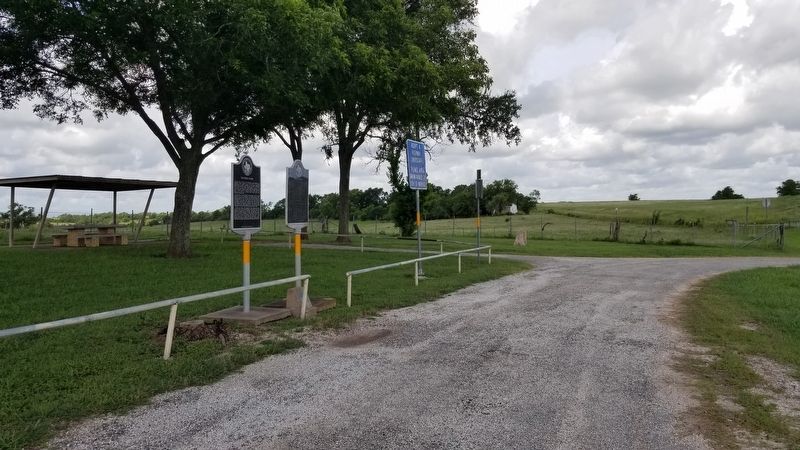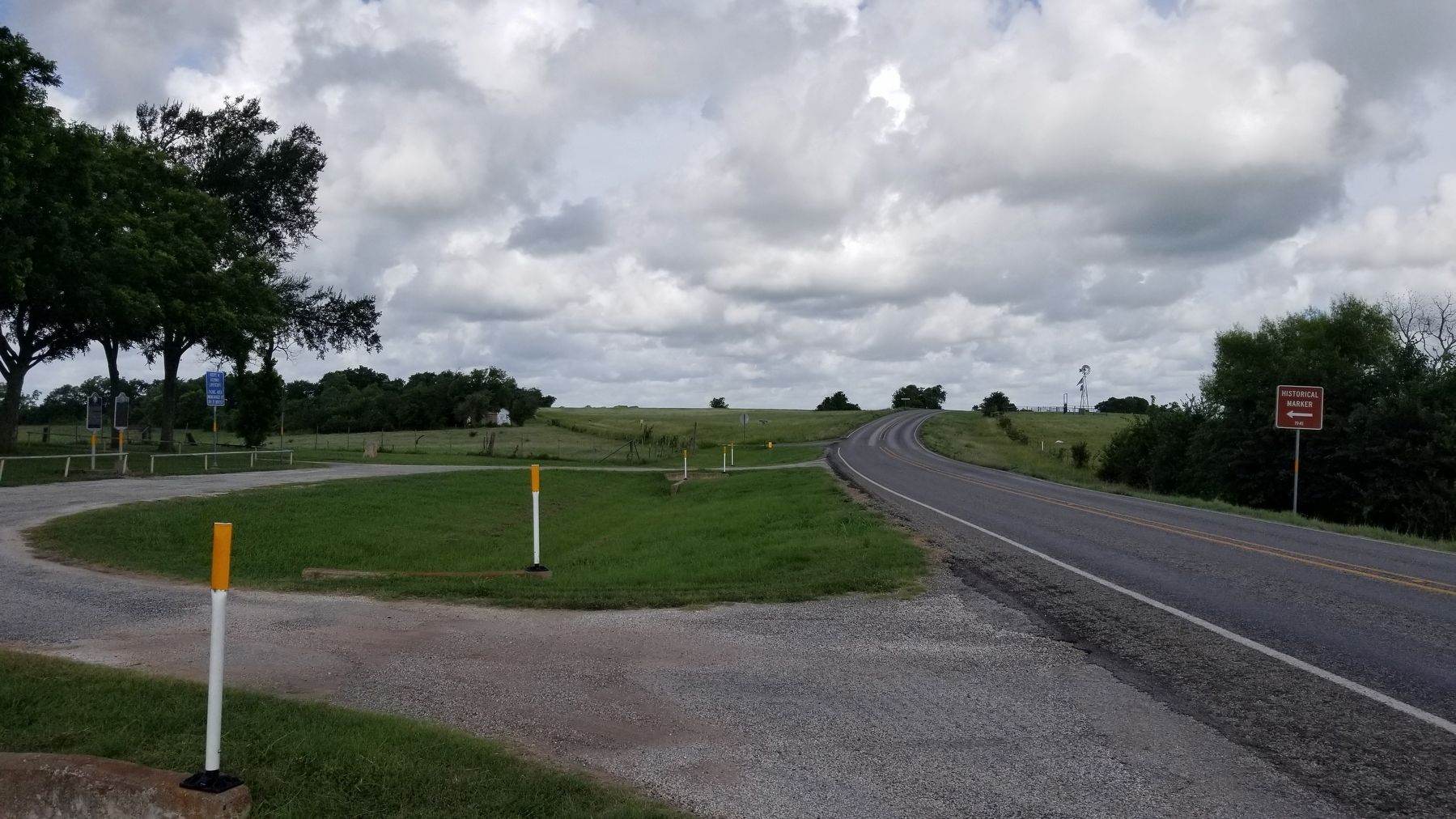Near Industry in Austin County, Texas — The American South (West South Central)
Fisches Park
Fisches Park is part of the original land granted to Frederich Ernst, known as "The Father of German Immigration to Texas." Industry is the oldest permanent German settlement in Texas and was settled by J.F. Fisches, who came to Texas from Wuerttemberg, Germany. The Fisches and Ernst families were joined through marriage and J.F. Fisches bought a piece of Ernst's land grant to farm in 1866. One of J.F. Fisches' sons, Willie, took over farming the family land.
At the turn of the century, automobiles were on the forefront of new technology and better roads were needed throughout the country for this growing form of transportation. In 1931, the new route for Texas Highway 159 passed by the Fisches farm. Willie's wife, Annie, was an automobile enthusiast and supported the 1939 Roadside Park Program that sought to beautify Texas roads. When Willie Fisches died, Annie deeded land to the State Highway Commission to create the Fisches Roadside Park in 1939.
The park has served the community and traveling public with an area of rest and enjoyment for over 75 years. The historical background of Industry also attracts many visitors of German descent. In 2008, the park was closed due to financial constraints, which deeply affected the community. A town hall meeting was held and it was decided that the city would maintain the park. It now remains open for all visitors and community citizens and is a reminder of German heritage and settlement of the area.
Erected 2014 by Texas Historical Commission. (Marker Number 17941.)
Topics. This historical marker is listed in these topic lists: Parks & Recreational Areas • Roads & Vehicles. A significant historical year for this entry is 1866.
Location. 29° 58.288′ N, 96° 31.199′ W. Marker is near Industry, Texas, in Austin County. Marker is at the intersection of State Highway 159 and Hofheinz Road, on the left when traveling west on State Highway 159. The marker is located at a roadside park with another historical marker. Touch for map. Marker is in this post office area: New Ulm TX 78950, United States of America. Touch for directions.
Other nearby markers. At least 8 other markers are within one mile of this marker, measured as the crow flies. Charles Fordtran (here, next to this marker); Industry Brethren Church Cemetery (approx. 0.4 miles away); Lindemann Store (approx. ¾ mile away); Lindemann - Ott House (approx. ¾ mile away); Industry Methodist Church (approx. 0.9 miles away); Industry Pilgrims Rest Cemetery (approx. 0.9 miles away); Industry United Methodist Cemetery (approx. 0.9 miles away); Industry State Bank (approx. 1.1 miles away). Touch for a list and map of all markers in Industry.
Also see . . . Germans.
Ernst wrote lengthy letters to friends in Germany, and through these "America letters" he reached and influenced other prospective migrants. He described a land with a winterless climate like that of Sicily. It had abundant game and fish, was fertile and rich, and awaited the impress of German labor to make it produce abundantly. Taxes were virtually nil, and large tracts of land were available for only a surveyor's fee; hunting and fishing required no licenses. Texas was an earthly paradise. Like other writers of America letters, Ernst stressed the positive aspects of the new land and downplayed or omitted the negative. One of his letters appeared in a newspaper in northwestern Germany and also in an emigrant guidebook and greatly magnified his role in promoting the migration. As a result of Ernst's letters, a small, steady stream of migrants left northwestern Germany for Texas. Source: The Handbook of Texas(Submitted on June 30, 2021, by James Hulse of Medina, Texas.)
Credits. This page was last revised on June 30, 2021. It was originally submitted on June 29, 2021, by James Hulse of Medina, Texas. This page has been viewed 169 times since then and 18 times this year. Photos: 1, 2, 3, 4. submitted on June 30, 2021, by James Hulse of Medina, Texas.



